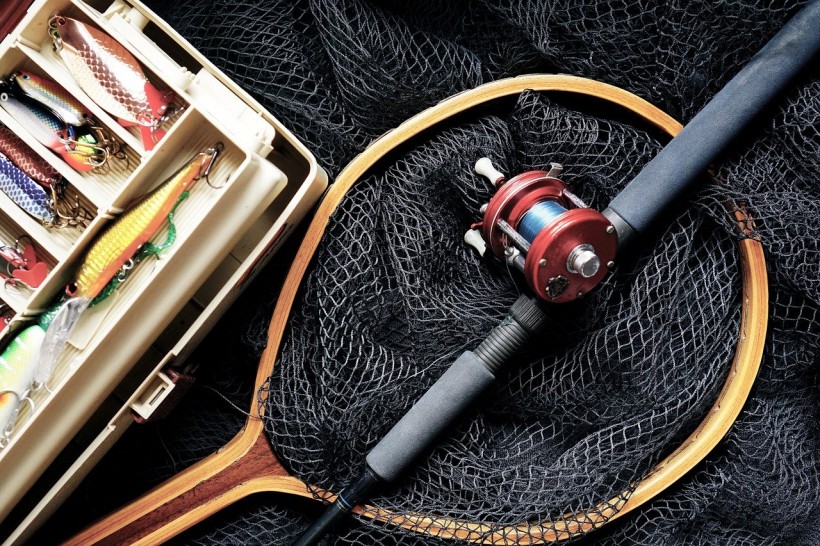
(Photo : Image by TheDigitalWay from Pixabay )
Fishing is a great way to relax, hang out with family, and get away from your busy lifestyle. Whether it's for a vacation or on your bucket list, fishing is easy to learn. It may sound complicated if you are a beginner, but with the right gear from Melton Tackle reels, a fishing license, and some beginner tips, you can easily become an expert at fishing while also having the time of your life.
There are different types of fishing, such as bait fishing, spinning, fly-fishing, baitcasting, and trolling. You can use these methods on both saltwater and freshwater. Whichever method you choose and where you choose to fish, the following tips will make your first time a bit easier.
Get a fishing license.
Before you pack your fishing gear and choose a spot, ensure you have a fishing license for the state you will be fishing. A fishing license is essential because it enhances, preserves, and protects the sport of fishing today and in the future. Different states have varying prices for their licenses, but it won't cost you much. They average at around $20.
You can go for an annual license because once you get into fishing for the first time, we are sure you will be going back again and again. You can easily find a fishing license online, sometimes at a convenience store or stores, which sell fishing gear, lures, etc. Don't forget to learn the fishing regulations around the area you have chosen to go fishing.
Fishing gear
If you're going fishing for the first time, shopping for fishing gear can be confusing. There are different fishing reels, rods, tackles, and accessories being sold online and on fishing stores that may overwhelm you. Each fishing gear has unique features that make it perfect for the purpose they are supposed to be used for. Here is an example of a few stuff you will need as a beginner.
Fishing rod - this is a thin pole made from flexible but durable material such as graphite or fiberglass to allow you to cast your fishing line into the water. The rod you choose to buy will depend on the kind of fishing you will do. Rods are classified according to their power, action responsiveness, and taper.
The fishing reel is connected to the fishing rod to help you wind the line and draw in the fish you catch. Fishing reels are affordable, lightweight, and easy to use. Spinning reels are best for fishing at the shore, boat, or pier because of their versatility.
However, there are budget-friendly rods and reels you can buy as a beginner. If you are fishing in shallow waters, a stick and a line should be enough to catch smaller fish.
Fishing line - it's also essential to have a fishing line for your rod. When buying a new reel, it may come with a fishing line, but it's also good to buy extra. Fishing lines usually break and tangle. It's good to be prepared.
The type of fishing line you purchase will depend on the environment you will be fishing in; rough conditions will need stronger and heavier fishing lines, while in calm and clear waters, thin and transparent fishing lines will work best so that the fish don't avoid them. Remember, your reel shouldn't have less than 100 yards of fishing line.
Hooks- you also need to buy different hooks sizes to catch different sizes of fish. The hooks poke fish in the mouth when they come in to nibble the bait. There are different types of hooks, such as circle, single, double, or treble. However, as a beginner, it is advisable to start with a single hook.
Bait - the bait is what you will put at the end of the fishing line to catch fish. There are different types of bait, and the one you choose for your fishing trip will depend on where you are fishing and the kind of fish you are aiming for. Different fish require different baits. The standard baits available are small fish (minnows) or worms. Other baits people use are pieces of hot dog, marshmallow, bread, or grub.
You can buy bait from your local fishing store, or if you are up for it, you can dig for worms in your backyard and store them well for your trip.
Lures - fishing lures are also baits but artificial ones. They are designed to mimic real fish, therefore, attracting predatory fish. Lures allow you to hunt specific fish. For example, plastic worms are great for hunting bass fish. Brightly colored lures are best for bright days and clear waters, while dark-colored lures are best for cloudy days and murky waters.
Useful fishing skills
Before you start on your fishing expedition, there are few knots you need to learn. Below are a few basic fishing knots.
The clinch knot - the most critical fishing knot to learn in fishing is the improved clinching knot. This is a knot that attaches your knot or hooks to your line. Once you have nailed this, you are good to go. You can learn how to tie a knot, on YouTube, from an advanced angler or fishing books.
The Palomar knot - great for its sturdiness and ease of tying, it's also used to secure your hook to your fishing line.
Double surgeons knot - the double surgeon's knot connects two fishing lines. It comes in handy when you get snagged, like when your lure is caught on a rock or log, and the fishing line breaks, and you need to create more lines to connect the hook.
Reading water - it's helpful to learn where fish hides in different types of water so you can hunt them better and is known as "reading water." For example, fish tend to hide around weeds or downed trees close to the shore in rivers and lakes. Look for places in the lake that provides good cover, and it will be easier for you to fish there.
While all the new vocabulary, gear, and rules can be intimidating at first, with time, when you get the hang of it, fishing can be a fun and exhilarating activity.
* This is a contributed article and this content does not necessarily represent the views of hngn.com








